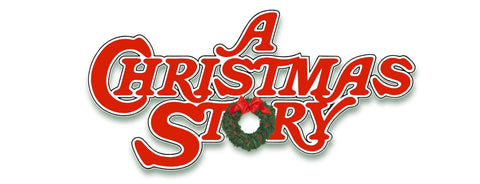
In previous posts in the ‘Poster Names and Sizes’ series, we have looked at poster formats from the U.S., the U.K., France, Italy and Japan.
In this post, we travel half way across the World from Art of the Movies H.Q. and take a look at the land of strange creatures - the Kangaroo, the Duck-Billed Platypus and the Australian Daybill.
History
The first public film screenings in Australia were held in late 1896, shortly after the birth of cinema. Ten years later, in 1906, Australia grabbed a very special record in the development of movies, with the release of the World’s first ‘full length’ feature film, “The Story of the Kelly Gang”, directed by two brothers, J. & N. Tait.
Weighing in at sixty-seven minutes and over a kilometre of film, “The Story of the Kelly Gang” told the story of the nineteenth Century outlaw, Ned Kelly. Kelly was born to Irish parents in Victoria and after a troubled upbringing, became involved in crime as a teenager. Following a violent encounter with police he was charged with attempted murder. He eluded police for two years, finally being wounded (despite wearing an improvised armour suit) in a gun battle and captured. His last words before being hung were, apparently, the rather stoic “Such is Life.”
In 2007 this silent film was recognised by UNESCO as a seminal work in the history of film making, and, the World’s first full-length narrative feature film.
1910 to 1914 was a golden period for Australian film making, with over eighty films produced. However, the onslaught of War and the cheap import of U.S. films decimated the industry.
Today, despite the success of films such as “Crocodile Dundee”, “Happy Feet”, “Babe” and “Moulin Rouge!”, Australia does not rank in the top fifteen film producing nations. It does however have a very healthy box office, approaching $1 billion in 2017, the ninth largest in the World.
Australia is clearly a nation of film lovers, even if its own film output is more limited.
Movie Poster Formats
Turning to Movie Posters, Australia is most famous for its ‘Daybill’ format. As we’ll see below, the format has been through a number of evolutions, but still retains the narrow portrait format that we also see in the U.S. Insert.
Daybill – Pre-war / Long - 15 in x 40 in (38.1 cm x 101.6 cm)
Pre-War, “Long” Daybills were produced two to a sheet of 30 in x 40 in piece of paper.
Daybill – War-time / Mini - 10 in x 30 in (25.4 cm x 76.2 cm)
With the advent of the Second World War, the Daybill was reduced in size. The reduction allowed four Daybills to be cut from a single sheet of paper, therefore minimising paper requirements in a time of shortage.
Daybill – Post-war - 13 in x 30 in (33.0 cm x 76.2 cm)
This Post-war size allowed three Daybills to be cut from a single sheet of paper.
Daybill – Post 1980s - 13 in x 26 in (33.0 cm x 66.0 cm)
In the 1980s, the Daybill was again reduced in size.
Perhaps due to the narrow format, Australian Daybills will often feature different, sometimes unique, artwork. A great example is the Australian Daybill for “The Empire Strikes Back” which features the stunning Japanese artwork of Noriyoshi Ohrai. It’s a superb poster.
Australian One-Sheet - 27 in x 40 in (68.6 cm x 66.0 cm)
The global march of the One-Sheet knows no bounds. Rare up until the 1970s, the Australian One-Sheet follows the ubiquitous format of its U.S. cousin.
Australian Three-Sheet - 40 in x 81 in (101.6 cm x 205.7 cm)
Formed from three One-Sheets, stacked one upon the other.
As we have done in our previous “Poster Names and Sizes” posts, below is a summary table giving poster names, formats and sizes in centimetres and inches.

A final warning - always measure your poster...
As we've said in previous posts, despite the definition of standards, movie posters do often vary in size. Please always re-measure your poster before ordering a frame. It may save you the cost of an unwanted frame, and, protect your poster from being squeezed in to too small a space.
We do hope you’ll take a look at Australian movie posters. The Daybill in particular is a great format, with its narrow size being great for a smaller wall or room.
If you would like to take a look at some fantastic Australian posters, you can use the 'filter by' option in our Catalogue and then choose 'Australian'. This will filter your view to posters for films released in the Australian, and, films produced there too.
We hope you find something you love.
Adam and the 'Art of the Movies' team




